Summer SURF 2020
Below are the project descriptions for 2020 Summer SURF projects. Carefully read the project descriptions to determine to which project(s) you are interested in applying. When submitting the application, students should address their interest in the specific project and how their qualities and experiences can aid the faculty their research. Students may want to contact the specific faculty mentor get acquainted with the faculty and to discuss their interests and project.
The student application links are located below at the end of each project description. The deadline for student applications is February 24, 2020, by midnight.
Social Sciences and Humanities
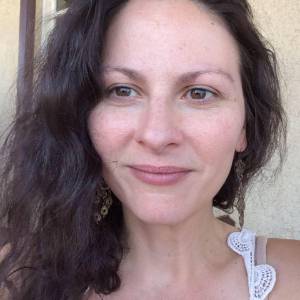
Dr. Kendall McClellan joined the English Program at California State University Channel Islands as a full-time lecturer in 2015. Her scholarly research focuses on the shifting dynamics of nationalist rhetoric and public sphere politics in the late eighteenth and early nineteenth century, with a particular interest in the capacity of political counterpublics to expand civic participation. Dr. McClellan’s first scholarly monograph, Virtuous Citizens – currently under contract with the University of Alabama Press – offers analysis of transatlantic literature exploring virtue, republicanism, and civic life from 1790-1860. Inspired by current political discourse and building on her monograph, Dr. McClellan’s current research explores the ties between nineteenth century and contemporary social justice activism in the United States.
Project Description
In February 2019, prominent activist Shaun King launched The North Star, a contemporary reimagining of Frederick Douglass’s abolitionist newspaper. King’s work in this way and many others raises important questions about the political valences of the public sphere, and its role in racial justice movements both during the 19th century and today. Influenced by the work of Nancy Fraser, Michael Warner, and Lauren Berlant, this project extends analysis of contemporary political counterpublics to understand the extent to which they echo or diverge from early American forms of textual community-building. In chapter five of his autobiography, Frederick Douglass describes horrific violence against slaves, and then bitterly notes the failure of both the law and general public to punish these crimes. When the government fails to hold citizens accountable for immoral deeds, Douglass suggests, the civic realm censure and punish. Today, Shaun King’s work uses the swift and broad reach of social media to enact this form of community-driven activism. Caught on camera, perpetrators of racially motivated calls to the police and explicit hate speech have avoided legal punishment and faced, instead, public sphere driven “private” consequences: social shaming and the economic blow of lost work. King’s efforts are a clear response to Trump’s promotion and normalization of hate speech, but the use of social media to shape civic behavior is complex and controversial – activists have been accused of spreading disinformation, encouraging mob mentality, and doxxing. While this project will focus on the liberatory potential of a counterpublic like the ones organized by Douglass and King, students will also be asked to consider these controversies, as well as the oppositional power of grassroots driven hate groups around the country. Do the tools change when the purpose of a counterpublic is to promote oppression? When are extra-judicial measures necessary to counter injustice? Are there ethical lines that shouldn’t be crossed in anti-racist social media, and who has the right to set those terms? As part of this project, students will first read theoretical articles on counterpublics and political activism. Before engaging in research that speaks to their media savvy, students will collaboratively identify activist websites, online newspapers, and social media accounts to analyze, and develop a list of key terms and concepts to focus their research. They will then collect data from their chosen sites, and with my guidance organize and synthesize their findings. Ultimately, students will present their findings on campus and be guided through applications for a group conference presentation as well. Any journal article that grows out of this projects will include a byline crediting the students for their work as researchers.
Apply to Professor McClellan's project
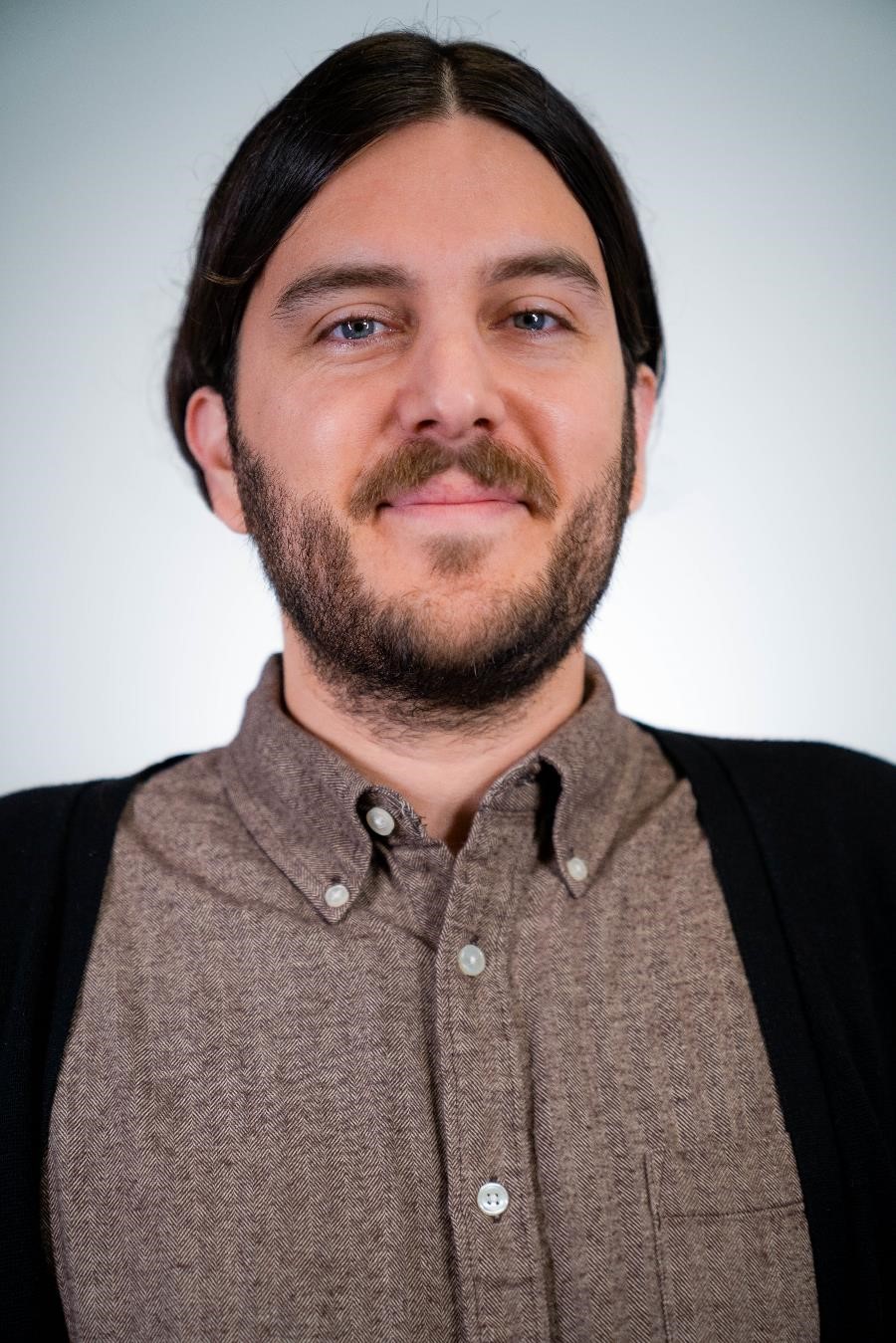
Dr. Francisco Roman Magdaleno Flores is a National Science Foundation fellow who works with songbirds as a comparative model for early social development in human infants. Originally from Oxnard, Dr. Magdaleno earned his B.S. in Psychology with a concentration in Applied Social Psychology and a minor in Sociology from Cal Poly, San Luis Obispo. He received his Ph.D. from Indiana University, Bloomington, where his graduate research focused on vocal and social development in the brown-headed cowbird (Molothrus ater). Currently, he is continuing research on visual and auditory signaling in cowbirds and is studying avian eggshells as a window into early prenatal development.
Project Description - "The Shape of an Eggshell: Implications for Early Development."
Songbirds are an established comparative model for social and vocal development in humans. Studies based on vocal development in songbirds, for example, have provided important insights into mechanisms that are essential for early speech development in human infants. The ability to address developmental questions in birds is facilitated by the fact that their eggshells can be easily preserved. The aim of this SURF project is to extend previous work I have conducted on the interrelation of structural features of the prenatal egg environment and enable multiple undergraduate research fellows at CSU Channel Islands to be involved with this research during summer 2020. The overall goal will be for them to conduct a study that focuses on measures of eggshell size. Specifically, they will investigate the eggs of the song sparrow (Melospiza melodia) and relate individual differences in egg size to the number of eggs in a set laid by a female (i.e., clutch size). Student researchers will work as a team and: 1) Conduct an independent literature review of peer-reviewed articles on prenatal development in humans and songbirds. Because this material is heavily rooted in biology and psychology, this project will be inherently interdisciplinary. 2) Collect images from the Western Foundation of Vertebrate Zoology online database, which offers free and open access to pictures of complete egg clutches from hundreds of different bird species. 3) Gather size measurements from the images that were collected. 4) Apply appropriate statistics to study the relationship between various structural features of the eggs based on clutch size. 5) Present findings at undergraduate research conferences (e.g., Southern California Conferences for Undergraduate Research; Fall Faculty-Student Research Showcase; Psychology Poster Session) and gain experience preparing a written manuscript for publication. All of the proposed tasks are feasible and can be easily accomplished through this eight-week faculty-mentored research project that will involve bi-weekly team meetings. In gaining valuable skills by conducting psychological research, each one of the participating undergraduate research fellows will become fit and better prepared for graduate school.
Apply to Professor Magdaleno's project
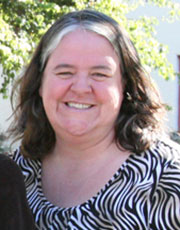
Dr. Marie Francois does research on the history of everyday life in Mexico City. Currently, she is focused on laundry in the eighteenth and nineteenth centuries. Her publications include A Culture of Everyday Credit: Housekeeping, Pawnbroking, and Governance in Mexico City, 1750-1920 (University of Nebraska Press, 2006); "Cloth and Silver: Pawning and Material Life in Mexico City at the Turn of the Nineteenth Century," The Americas (2004); “Housekeeping, Development, and Culture in Porfirian Chihuahua and Sonora,” Mexican Studies/Estudios Mexicanos (2011); “Products of Consumption: Housework in Latin American Political Economies and Cultures,” History Compass (2008); and “Stitching Identities: Clothing Production and Consumption in Mexico City,” in Pertierra and Sinclair, eds. Consumer Culture in Latin America (Palgrave Macmillan, 2013). She has published articles in Mexico in Estudios de Historia Novohispana (1999) and the Historia de la vida cotidiana series published by El Colegio de México (2005).
Project Description
I am writing a history of laundry and laundresses in Mexico City in the 18th and 19th century. The SURF project entails mapping the economic and social relationships of entrepreneurial laundresses and laundry work places and further documenting the lives of laundresses and their clients to support this project. This project is finding that women working outside the formal artisan guild structure and state regulation had some ability to shape their work, and that their “workshop” and “place of business” were spread out across the capital city with scarce access to scarce water resources—vital to their work. Both elite households with large volumes of clothing and linens to be laundered and working people with few material resources all depended on the laundering labor of professional washerwomen. Institutions such as the Recogimiento/Colegio de Belén served as trade schools of sorts with girls and women living at Belén paid to wash the linens of the Catholic Archdiocese. Working on the Laundry and Life in Mexico City project, students will have the chance to hone historical research skills: searching in digital databases for primary sources relevant to the laundry sector in 18th- and 19th- century Mexico City; translating hand-written archival sources from 18th- and 19th-century Spanish into English; analyzing household account documents from 1769 to identify patterns in daily economic and social life; and reading monographs (including mine on pawning in the same time period, A Culture of Everyday Credit, University of Nebraska Press, 2006) and other peer-reviewed research to acquaint themselves with the history of Mexico City.
We will be mapping the laundry sector – using addresses of laundress homes, washhouses, fountains, and institutions such as hospitals, residential schools, convents, and hotels – across time in Mexico City and build out this “Se Mantiene de Lavar” Omeka site. Students will draw on location data from census manuscripts (1790, 1811, and 1848), city archive documents, and advertisements from period newspapers to build a physical picture of the laundry business. Using grids from Planos de la Ciudad de Mexico published by the Instituto Nacional de Antropologia y Historia as base maps and rectified historical maps, we will use Neatline software to track changes in the geography of laundering and laundry relationships across time. Anyone with an interest in the History of Mexico is welcome, no previous research experience is required. Ability to read Spanish, and/or experience with digital document management software, GPS, spatial software such as Neatline or StoryMaps, or Omeka a plus. In addition to further documenting laundering practices and building spatial analytic capacity for the Laundry and Life book project, students will investigate a research question that they develop related to the project. The end products will be publishable maps for the book, an interactive Omeka site depicting and narrating the evolving laundry business to complement the book, and a co-authored article or articles on themes developed by the students through the course of their research.
Apply to Professor Francois's project
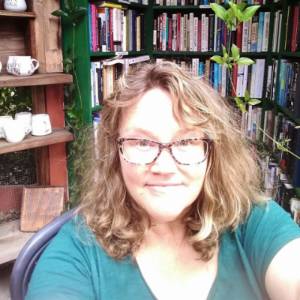
Kathleen Klompien, a 15-year veteran of the Composition Program, has her Ph.D. in Composition and TESOL from Indiana University Pennsylvania and her dissertation is a qualitative study of the history of remediation in the CSU.
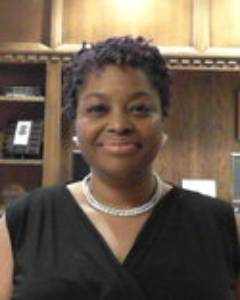
Raquel Baker earned a PhD in English Literary Studies from the University of Iowa. She specializes in Postcolonial Studies and 20th- and 21st-century African literatures in English. She received a BA in Psychology from San Francisco State University and an MFA in Creative Writing from Mills College in Oakland, California. She is currently an Assistant Professor of Postcolonial and Transnational Literatures at California State University Channel Islands.
Project Description - "Developing Cultures of Engagement in Humanities Classrooms at CI."
Humanities faculty often spend much time and energy considering what classroom culture can be. We want students to learn the emotional and mechanical (linguistic, written, and oral communication) engagement skills that will allow them to increase their understandings of the world around them and transform it as they deem necessary through their work on and in it. Making interpretive claims about texts and ideas in writing and class discussion—the bread and butter of humanities classrooms—is a complex skill that comprises emotional, intellectual, and academic competencies. Developing classroom cultures of co-creation that disrupt hierarchical classroom structures requires developing trusting relationships with and among students. Trust is the essential condition necessary to be an effective educator in a classroom where students do not feel comfortable to speak until they understand to whom they are speaking. In the commonplace of the classroom, we are each read as texts by others—and all of the overdetermined ways of reading clothing, skin color, body type, ability, race, gender, sexuality, (the list goes on) impinge upon our abilities to speak and to be heard. In a humanities classroom, the highest goal is to co-create knowledge about the experience of being human, and co-creation requires the ability to speak and be heard by others—in short, to open ourselves to the gaze and aural register of others. To be able to do so requires the cultivation of engaged community.
Raquel and Kathleen have been investigating and problematizing the humanities classroom as a commonplace based on reflection on and discussion of marginalizing classroom experiences. The common denominator about what silences students seems to be assumptions about race and not wanting to risk being judged about their statements on the topic. The ways in which students articulate the inability to speak in courses that center “diversity”— in which the aim is to develop inclusivity as a cultural competency—leads to the key question we would like to explore through discussion, storytelling, and the digital archiving of experience. Have you felt silenced in a humanities course? If so, what were they dynamics that made you feel you could not speak? We seek to develop an ethics of inclusivity in classrooms that themselves operate within an overarching system which is undergirded by white supremacy. Which is to say, in a supremacist or hierarchical culture, people with different subject positions have different facts and only feel safe when their readings of the world are centered, so how can we develop courageous classroom cultures in which students can engage across difference? We want to move beyond surveying and interviewing students in our classes about their experiences of silence to enacting new research methods, incorporating the same techniques with students we use as reflective teachers and researchers. For over ten years, Critical Friends/Critical Learning Communities have been utilized at CI to support faculty, administrators, and staff.
This research project will allow students to research their various subject positions using these protocols. Students will Read texts to develop a theoretical framework about active engagement in class. Identify, summarize, and synthesize additional relevant research. Participate in discussion circles to discuss what helps and hinders course engagement. Write reflection papers in response to theory and discussion. Develop one lesson and best practice suggestions to develop engagement-rigorous classroom cultures. The summer SURF experience will help provide us with a deeper understanding of how to engage students and will provide them with a framework to evaluate their engagement in courses, identify what is hindering engagement, and have a better understanding of activities and strategies to create engaged classroom cultures beyond their summer experience.
Apply to Professors Klompien and Baker's project
Math and Sciences
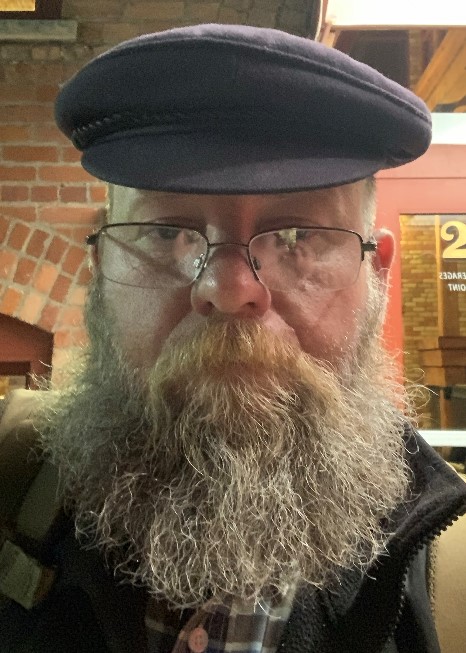
Jason Miller is a math professor. Has been one for a long time. His interests tend toward computer vision and differentiable geometry and how mathematics can be deployed in interdisciplinary contexts. He fell in love with mathematics as a sophomore in college, and immediately after graduation pursued a Ph.D. at the University of North Carolina. He taught at Truman State University before joining the CI community. Miller lives in Camarillo with his wife, two daughters, and a neurotic dog.
Project Description
I am interested in understanding how we can use methods from data science to identify the species of a free-flying bat using recordings of their search-phase echolocation calls. I’m also interested in searching for bats and recording them in the wild. So this exciting project seeks students in the mathematical and life sciences who like the outdoors and are interested in learning more about mathematical methods to understand data. In reviewing documents and papers about Santa Rosa Island (e.g., the Channel Islands National Park Final General Management Plan Wilderness Study Environmental Impact Statement, “Distribution of the Bats of the California the Channel Islands”) and in communicating with other experts in the field, it appears that not much is known about bat species on Santa Rosa Island, especially since the feral pigs and eagles have been removed. Having some previous experience working with biologists on bat surveys in Missouri, I understand how to work with students to collect acoustic data on free flying bats in the wilderness.
For the SURF program, I would like to work with a small team of biology and mathematical science students to continue and extend a survey of bat populations on Santa Rosa Island, and to start work on exploring the Los Padres National Forest and Wilderness. Students will be involved in every aspect of the project: collecting data, recommending site selection, reviewing data, and creating models for species identification. Our work will involve collecting recordings of the ultrasonic search-phase calls of free flying bats in the wild, organizing those recordings, and then studying them using mathematical methods. I am looking for strong biology student(s) because finding and recording the bats requires an understanding of the natural history of the bat species that we expect to encounter. This includes finding the likely foraging locations of those bats, a skill that requires an understanding of the island fauna, insect populations, and microclimates. I am looking for strong mathematical science students (e.g., mathematics, computer science, data science) because we will be using professional software and machine learning algorithms to sort the data we collect. Our work will be creative, and it will be intellectually and physically rigorous. Obtaining recordings will require us to spend a significant amount of time in the field. We will work with recording instruments from Titley Electronics, consulting with the bat technologists at their U.S. office in Columbia, Missouri. We will also interact with local bat professions in the National Park Service, in the Southern California Bat Working Group, and in industry. We will use the Anabat Walkabout to scout locations for month-long passive surveys, and we will use the Anabat Swift for month-location collections of data. Data will be reviewed and cleaned on Anabat Insight software before being saved and analyzed. The data we collect will be shared with national and international program that are monitoring bat populations, such as the North American Bat Monitoring Program (NABat). Data will also be made available online for public use.
Apply to Professors Miller's project
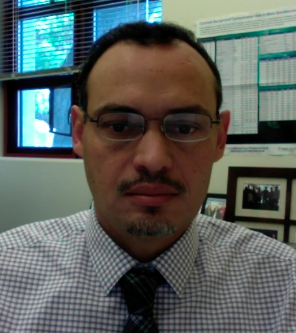
Dr. Ahmed Awad is an Associate Professor of Chemistry at CSUCI. He received his Ph.D. in Bioorganic Chemistry from University of Ulm in Germany, and did his postdoctoral research at Iowa State and UC Santa Barbara. His research interest is in design and development of novel therapeutics for treatment of cancer and infectious diseases. He focuses on nucleoside analogues and nucleic acids chemistry to develop novel therapeutics.
Project Description - "Investigation of novel nucleoside therapeutics for treatment of pancreatic cancer"
Pancreas is a gland in the digestive system produces enzymes and hormones that regulate blood sugar. In pancreatic cancer, uncontrolled cell growth begins in parts of the pancreas which develop tumors that interfere with its function. Pancreatic cancer is difficult to detect in its early stages, and it spreads rapidly to nearby organs such as liver. Recent reports showed that more than 56,000 new cases in the US are expected to be diagnosed with pancreatic cancer annually making pancreatic cancer the 3rd most common cause of cancer deaths. Symptoms of pancreatic cancer includes loss of appetite, weight loss, pain in the upper abdomen and in the back, fatigue and depression. Treatments include surgery, chemotherapy, and radiation, with a mean survival rate of approximately 4 to 6 months. Cellular drug resistance, high metastatic growth, and tumor relapse contributes to the difficulties in treatment of pancreatic cancer. Nucleosides are the building blocks of the nucleic acids, RNA and DNA. Current standard chemotherapy treatments for pancreatic cancer is gemcitabine, a nucleoside analogue that has been approved by FDA in 1997. However, its effectiveness is far from satisfactory due to the complex tumor environment and high metastatic growth. The survival rate at 12 months was 18% for gemcitabine patients. Therefore, pancreatic cancer remains an important clinical and biological challenge.
In this proposed project, students will investigate and develop novel nucleoside analogues that can be screened as effective agents to treat pancreatic cancer. Students will work on synthesis of novel sulfonamide-nucleosides. Sulfonamides are important class of compounds that have been reported as anticancer and antimicrobial agents, and at least two clinically used HIV inhibitors possess sulfonamides in their molecules. Computational study will be performed to examine the binding affinity of the designed molecules to their enzymatic targets in pancreatic cancer cells, and their toxicity properties will be evaluated. The synthesized molecules will be purified and structures will be confirmed by spectroscopic techniques (Mass, IR, and NMR). These compounds will be submitted to the National Cancer Institute for screening in their cancer cell line assay system. The participating SURFers will perform computational studies and will develop an effective and convenient methods to synthesize the target molecules. The faculty member will introduce the synthetic methods, and will propose alternative solutions for possible problems. Students will perform literature survey, collect reported protocols, and with the guidance’s of the faculty research mentor will develop their synthetic schemes. Students proposals will be discussed before an efficient synthetic route are recommended. After intensive training provided by the faculty, students and the faculty will work on their synthetic protocols, purify their products by column chromatography, characterize their new compounds using NMR and Mass spec techniques, and analyze their data for the final conclusion.
Students should commit to the eight-week faculty-mentored student research collaborative during the summer 2020 and also be excited to work during the fall semester 2020 to complete the project. The faculty will be present to mentor and train students, and will make himself available at any time to provide them with guidance and advice. There will be a daily group meeting to discuss the progress of the project. Students will be recognized and acknowledged for their efforts. Those who produced outstanding research will be able to present their work at scientific conferences (including SCCUR, CI SAGE, CSUPERB, NCUR, and ACS) and will be encouraged to submit their work for publication. In addition, outstanding students will be nominated for research awards and scholarships.
Apply to Professors Awad's project
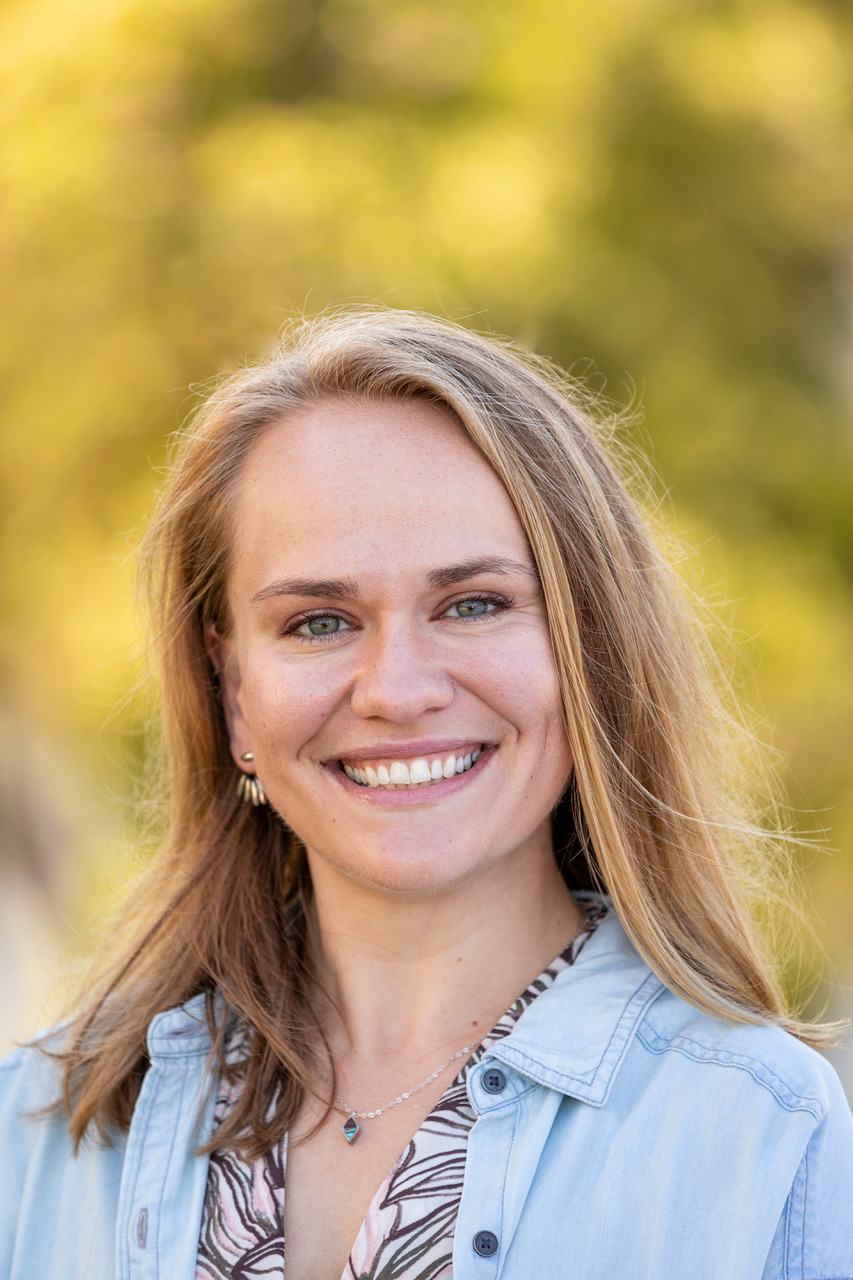
Emily Fairfax is an Assistant Professor of Environmental Science and Resource Management (ESRM). She double-majored in Chemistry and Physics, then earned her Ph.D. in Geology. Emily loves the outdoors - in particular, hiking, exploring, and feeling connected to nature. Her research falls into three categories: Ecohydrology, data science/technology, and field accessibility. She is excited to bring her three research domains and love of the outdoors together on this Virtual Reality project.
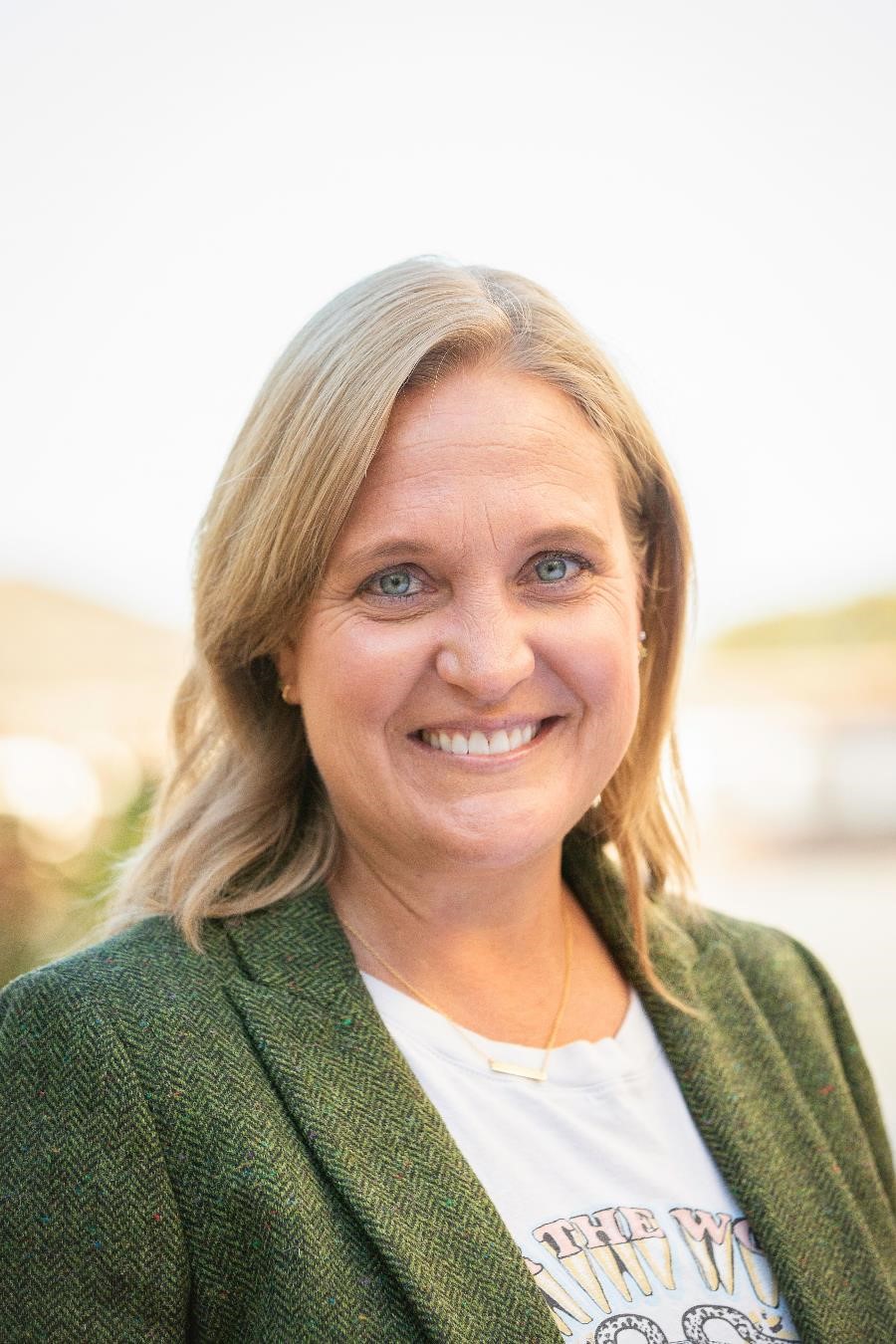
Dr. Kiki Patsch is currently an Assistant Professor of Environmental Science and Resource Management at California State University Channel Islands in Camarillo, California. Patsch completed her undergraduate degree at the University of Virginia in Environmental Science and earned her Ph.D. in Earth and Planetary Sciences with a focus on coastal geology, processes, and hazards under the guidance of Dr. Gary Griggs at the University of California Santa Cruz. Patsch joined the CSUCI faculty in the fall of 2015. Through her work, Dr. Patsch aims to bridge the gap between policymakers, scientists, engineers, and private citizens on issues related to the coastal zone. Dr. Patsch's past and current research focuses on coastal geomorphology and processes, shoreline hazard assessment, sediment budgets analysis, sea cliff and beach erosion, reductions in the natural supply of sediment to the coast, and coastal armoring along the California coast. Patsch is currently developing regionally based, socially relevant research projects and programs with fellow faculty members as well as undergraduate students and pushing the boundaries of our knowledge of the dynamic coastal zone in the framework of environmental science and resource management. Our beaches and coastal environments are an important natural resource that needs to be studied and preserved. See more on her website: www.sandshed.org
Project Description
Santa Rosa Island has a rich history of land use change, environmental restoration success stories, and occupation by various peoples. It also has a rich history of research, created by scholars from CSUCI and the broader community. Unfortunately, both the island itself and many of these stories, histories, and research products are disconnected from one another and are difficult to access. Many of our students, faculty, and staff are unable to go to Santa Rosa Island at all since it requires significant time and financial resources, and presents numerous barriers to people with physical disabilities. Of those individuals that are able to go to the island, most experience only a small fraction of the island due to time constraints. This makes it challenging to get a sense of the full story of the island - both as a physical entity and of the work that CSUCI faculty and students accomplish there. Fortunately, augmented reality and virtual reality technology can seamlessly integrate multimedia research highlights and cultural narratives into an immersive educational island experience - and that experience can either take place on the island itself or in a VR headset here on CSUCI’s campus. This project has four key deliverables: 1) an interactive, augmented reality GPS-based tour of Santa Rosa Island that can be downloaded and accessed while on the island. It links GPS locations and trigger images on smartphones to embedded data visualizations, music, historical photographs, and ecological information at each point on the tour. 2)a scaled down, fully accessible virtual reality version of the island tour based on the CSUCI campus. Users have all the features of the augmented reality island tour, plus 360 degree photography and videography of the island to “take them there” without ever having to get on the boat. 3) a simplified, web-based interactive ESRI StoryMap of the island to publicly host as an advertisement/sneak peak of the full tour 4) a fully documented user guide and physical map to accompany the tour and to direct users to more in-depth information and research about the island We will work with the library to curate research highlights, cultural narratives, and other media for inclusion in the tour. Based on that, the whole research team will go to Santa Rosa Island 1-2 times in the summer. We will collect GPS points for locations of interest with handheld GPS units and 360 photography, videography, and audio using GoPro Max 360 and Fly360 HD cameras. In the interest of time, the summer researchers will focus on one tour loop/trail on the island - the ultimate tour collection will feature many interconnected loops and trails worth of data to be collected and imported over the coming years. Back on campus, we will import our GPS points into three softwares to create the three versions of our tour: ESRI Arc Suite (web tour sneak peak), Metaverse (augmented reality), and Google Poly and Tour Creator (virtual reality). Once the bones of the tour are established in each software, we will embed the curated multimedia in appropriate locations. The tours will all be viewable in flat-mode on any phone or tablet. The virtual reality tour will be viewable on Google Cardboard or comparable virtual reality headsets.. A user guide will be developed to thoroughly document the experience in both forms. Students will - conduct a literature review on the theory of multimedia learning, accessibility and inclusion in undergraduate STEM outcomes, and assessing educational technology (2-3 weeks). - develop a tour outline to guide data collection on the island (1 week). - assist in the island media data collection process (1-2 trips early in the summer) - build the tours in ESRI Arc Suite, Metaverse, and Google Poly (2-3 weeks) - assist in designing a tour assessment protocol to be deployed in Fall 2020 (1 week) - contribute documentation to the tour user guide throughout the summer - create a poster based on their work.
Apply to Professors Fairfax and Patsch's project
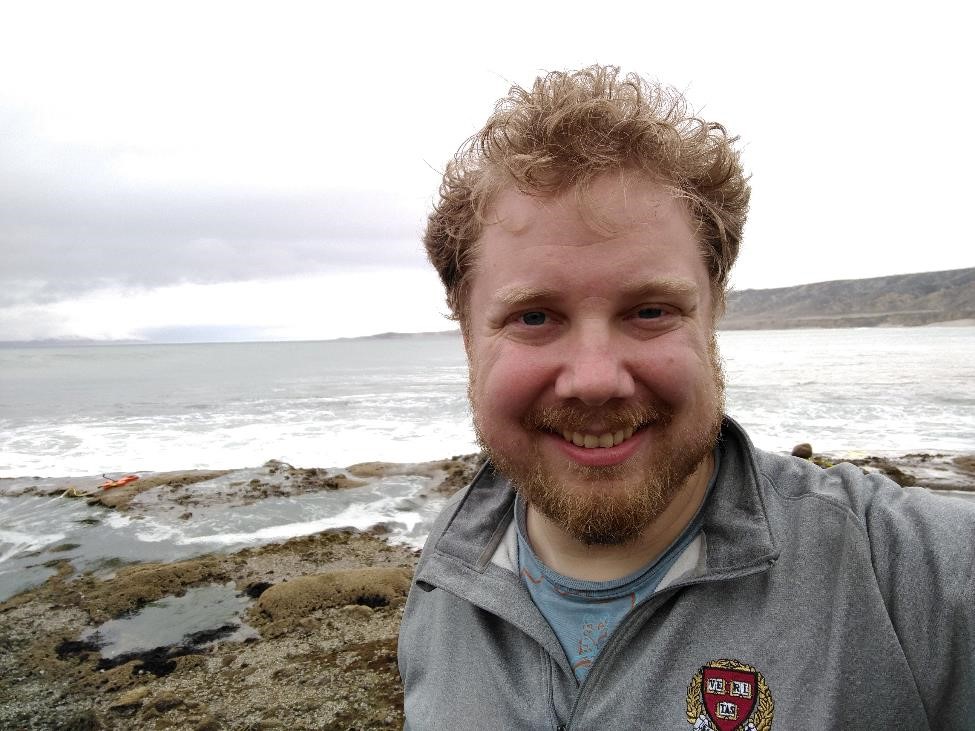
Dr. Geoff Dilly is Assistant Professor of Biology at CI. He was a Postdoctoral Fellow at UC Santa Barbara and earned his PhD in Biology at Harvard. He is a Marine Ecophysiologist - studying the impacts of human influences on marine invertebrate populations in the lab and in the field.
Project Description - "Measuring microplastics and environmental toxins in the field and monitoring their effects on mussels in the lab"
My research at CSUCI focuses on the stresses the environment places on the organisms that live within – specifically marine mussels. I have previously worked with students to study thermal stresses on mussels. My research currently, however, is beginning to examine the effects of microplastics. Microplastics are pervasive and ubiquitous. A single teabag may release billions of microplastic particles; a single load of laundry will introduce millions of acrylic and polyethylene fibers into the waterways. Additionally, in aquatic environments, these plastic fibers and particles sorb (bind to) hydrophobic organic compounds (HOCs) known to be environmental toxins such as Benzo-α-pyrene (BaP). BaP is a byproduct of coal fire, a major ingredient in cigarettes, a natural oil and gas derivative, and can be found in vehicle and ship exhaust. BaP is specifically environmentally relevant to the Channel Islands region; our lab reviewed the state and county data in the Ventura, Santa Barbara and Channel Islands Harbors and found dozens of instances of measured background levels above the published EPA safety limits. Both microplastics and BaP are known to be harmful to mollusks such as mussels. The interactive effects of microplastic pollution and environmental toxins on marine organisms remain understudied. Examining the interactive effects of these emergent threats is critical and timely as anthropogenic stressors threaten global marine biodiversity. This is especially important for intertidal communities, where organisms currently living near their limits yet may respond in multiple ways to a changing climate – through physiological or metabolic changes, genetic shifts, migration, and finally, torpor and death.
In Summer 2020, I will work with CSUCI research students to travel to the surrounding watersheds in Ventura and Santa Barbara county to collect environmental samples of microplastics and BaP in water, sediment, and in living mussels. Working with colleagues in Biology and Chemistry, the students will catalogue the effects of these environmental toxins on mussels as well as quantify their environmental levels using GC/MS and filtration/microscopy. Additionally, students will work with me to examine the genotypic and physiological effects of microplastics and BaP on mussels through molecular analytics such as quantitative PCR and respirometry on live collections. Through this process, students will gain first-hand experience working on novel questions using a built mesocosm in our lab along with environmental sampling field work. Students will be involved in the collections and aquaria maintenance as well as carry out respirometric experiments. Students will learn molecular techniques, data analysis, bioinformatics, and statistics through this process as well. Finally, student researchers may have the opportunity to present this research at regional or national conferences and will be offered the option to be authors on any resulting manuscripts.
Apply to Professor Dilly's project
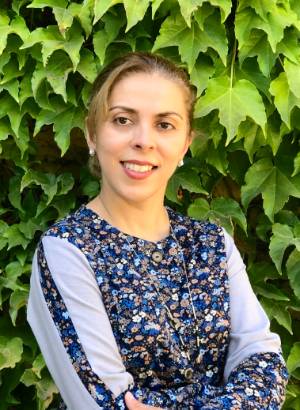
Dr. Vida Vakilian is currently an Assistant Professor at CSUCI. She received her Ph.D. in Electrical Engineering from University of Montreal. Upon graduation, she joined University of California-Riverside as a postdoctoral research fellow. Dr. Vakilian has completed several research projects in collaboration with industry and R&D laboratories. Her current research involves wireless-enabled robots. She has recently received an NSF EARS award for her innovative research on developing new wireless systems.
Project Description
Robots are now becoming an essential part of our daily lives and performing everyday tasks in more intelligent and effective ways. Robots have found application in many domains including industrial automation, health care, surveillance, rescue missions, and agriculture. Over the last decade, researchers have been motivated to look into the collaborative aspects of robotics where a group of robots work together to perform a set of tasks such as search and rescue in disastrous environments and exploration of unknown environments. However, most of the research works on collaborative robotics have mostly focused on either theoretical concepts or incomplete practical systems lacking consideration of real world conditions such as realistic channel modeling and efficient network protocols for interaction among the robots. The realistic channel model refers to a wireless channel model that accounts for most of the well-known dynamics of a standard wireless channel such as path loss, fading, and shadowing. On the other hand, the mobility models used in most of these works remained simple, impractical, and irrelevant to robotic motion control. More importantly, the emerging multi-robot network applications require ultra-reliable low-latency communications (URLLC). The current models fail to meet this requirement. In this research project, we will study these issues in a multi-robot network with the emphasis on wireless communication channel model and URLLC for teams of robots. URLLC enables having a dynamic point-to-point communication infrastructure with an external command structure, and coordinated algorithms for control, estimation and inference. In other words, the URLLC capability is highly essential in collaborative multi-agent robots. This research entails a unified examination of many problems that are typically considered separately including system architectures, wireless channel modeling, network routing, and coordinated motion planning. One application context of our wireless multi-robot network is in robot assisted fire-fighting where the robots are tasked to sense the unknown environments to help and guide the firefighters. Teams of low-cost, low-power, expendable robots are able to distribute themselves through the site in place of firefighters in order to locate survivors and identify dangerous locations. To be successful in their mission, the robots have to maintain a good connectivity among themselves and the control station. These robots are equipped with wireless technology such as Bluetooth, Wi-Fi, and Wireless Lan. In this project, student researchers will first formulate a problem that specifies both the physical task and end-to-end wireless communication that must be maintained. In pursuit of a solution to this problem, they address topics ranging from the modeling of realistic wireless communication channel to mobility control for connectivity maintenance. Furthermore with direct supervision of the faculty member, the students begin to design and implement a decentralized testbed for multi-robot network to verify the developed models. Experiments on this testbed allow us to determine the accuracy of the considered wireless channel model and to verify that our algorithms for mobility control maintain the desired instantaneous rates when routing through the wireless network.
Apply to Professor Vakilian's project
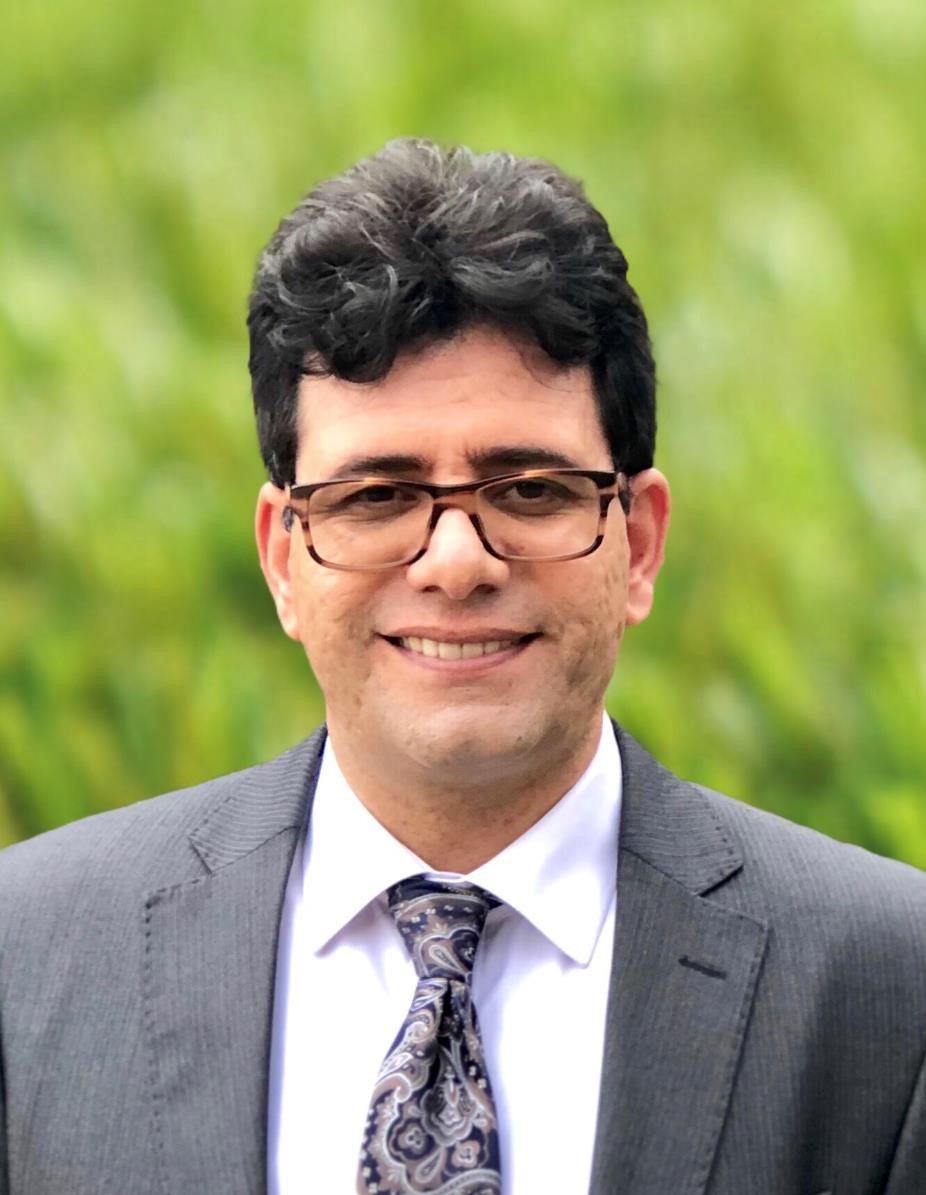
Reza Abdolee received his Ph.D. in Electrical and Computer Engineering from McGill University in 2014. He is currently an Assistant Professor in the Dept. of Computer Science at California State University Channels Islands (CSUCI) and leading the Cybersecurity and Wireless Systems Lab. Prior to this, Dr. Abdolee has been holding different academic and industry positions in several universities and high-tech companies, including, University of California, Los Angeles (UCLA), Bell Labs, Qualcomm Inc., and California State University, Bakersfield (CSUB). During the past few years, Dr. Abdolee research resulted in several patents and inventions in addition to many interesting peer-reviewed journal publications and conference proceedings. He is currently conducting research in the area of cybersecurity and wireless communications with applications to Internet-of-Things (IoT) and the next generation of wireless communication systems.
Project Description
Machine-Learning Based Wireless Cybersecurity Monitoring and Penetration Testing Abstract: The US Government has identified cybersecurity as one of the most serious economic and national security challenges we face as a nation today. Cybersecurity Venture revealed that in 2018, hacker stole half a billion of personal records. It has been reported that there is a cyberattack every 39 second, affecting one in three American each year. These statistics and many other cyberattacks incidents that happen every day make us to think about the urgency of the matter and the ever-growing need for knowledgeable cybersecurity professionals to protect people and the country. This research aims to deeply immerse Computer Science students to cutting-edge cybersecurity research and train them to become part of the cybersecurity workforce needed in businesses and government organizations.
In this research, students will learn the core skill sets in “penetration testing and security monitoring”. Equipped with the latest cyber security tools, students are exposed to an authentic simulation environment where they must complete the tasks embedded in the realistic context of work as an entry-level cybersecurity professional. The hands-on penetration testing practices offered in this program are designed to provide the necessary problem solving skill and knowledge that the students need for a career in this field. Penetration testing is a series of activities and processes undertaken to identify cybersecurity vulnerabilities of a computer systems and networks. Penetration testing helps to measure the effectiveness of the security mechanisms implemented to keep information and data safe and secure. Nowadays, wireless networks protocols, including WiFi, Zigbee, LoRaWAN constitute a sizeable portion of computer networks, which are more susceptible to cyberattacks. A penetration test on wireless network is a proactive and authorized attempt to evaluate the security of an IT infrastructure by safely attempting to exploit system vulnerabilities, including OS, services and application flaws, improper configurations, and even unintentional end-user errors. Such assessments are also useful in validating the efficiency of network security mechanisms, as well as the end users’ adherence to security policies. Several operating system distributions such as Kali Linux, Pentoo are equipped and designed for penetration testing. However, these systems require highly skilled professional with deep technical knowledge about networking, attacks and penetration testing methods to manually enter commands and keywords for each attack and penetration testing methods.
In this summer research program, the aim is to come up with a framework and strategies to automate the assessment of wireless network security. The product of this research will be a complete automated penetration test tool enabled by machine-learning algorithms that eliminates the need for manual penetration testing. The research program can be divided into three phases. In phases I, the students learn about the common wireless cyberattacks, including, Eavesdropping, Sniffer Attack, Compromised-Key, Man-in-the-Middle, and Denial-of-Service. In phase II, the students will be guided into researching the latest machine-learning algorithms and technical tools for wireless penetration testing and security monitoring. Students will be expected to read relevant research papers in this area and participate in a weekly group discussion of the related literature. Working with existing wireless network security testing tools and software such as Acunetix, Entercap, Nmap, and Metasploit will be included in their learning schedule as these techniques are the core for the proposed automated toolkit. In phase III, students will work with the faculty member and the research assistant to design the architecture of the automated penetration testing tool and participate in designing the web and mobile application.
